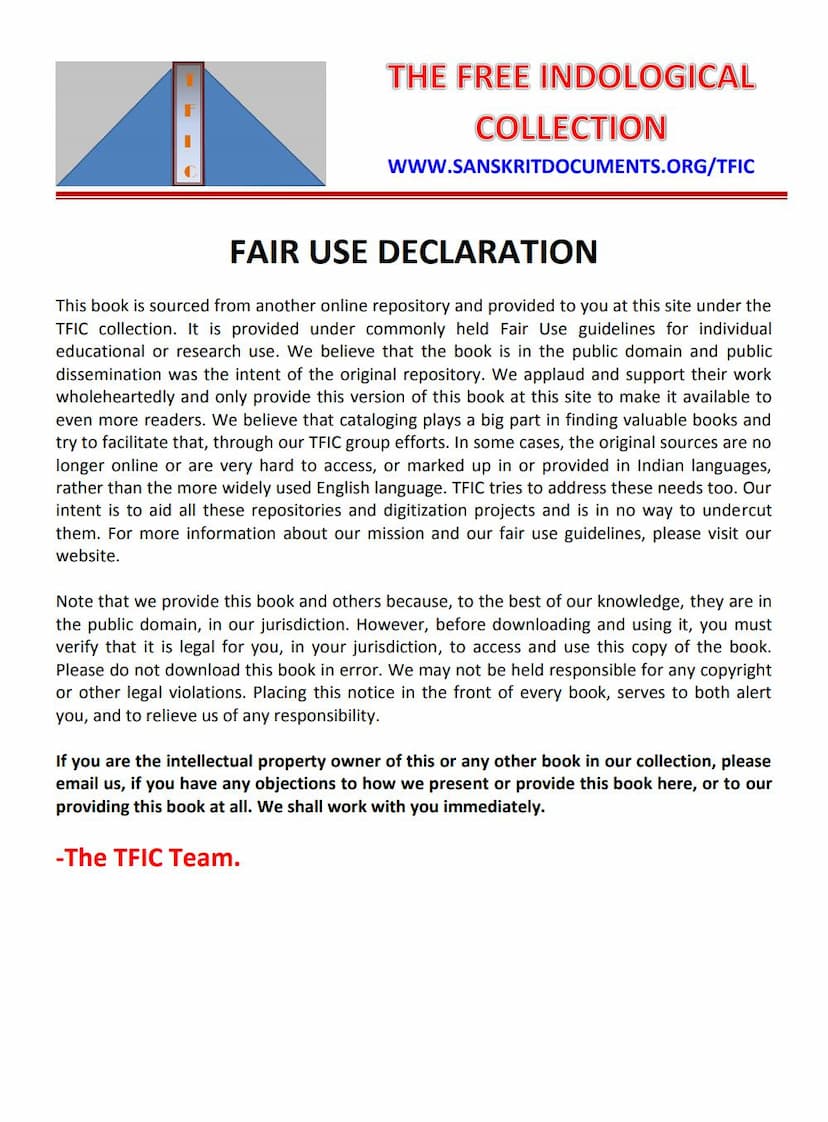Jain Siddhant Pravesh Ratnamala 03
Added to library: September 2, 2025

Summary
Here is a comprehensive summary of the Jain text "Jain Siddhant Pravesh Ratnamala 03":
Book Title: Jain Siddhant Pravesh Ratnamala 03 (Jain Principle Entrance Jewel Garland 03) Author(s): Digambar Jain Mumukshu Mandal Dehradun Publisher: Digambar Jain Mumukshu Mandal
Overview:
This book, the third volume in the "Jain Siddhant Pravesh Ratnamala" series, is presented as a guide for sincere aspirants seeking to understand and practice Jain principles. It emphasizes the importance of discerning the true nature of the self from external substances and adopting the right path for liberation. The text is structured in a question-and-answer format, making complex philosophical concepts accessible.
Key Themes and Content:
The book is divided into sections focusing on essential Jain philosophical concepts, presented through a series of questions and answers:
-
Bhed Vigyan (Discernment/Discrimination): This initial section focuses on understanding "who you are" and "who you are not." It establishes the self (Atma) as an embodiment of infinite qualities like knowledge, perception, and conduct, distinct from external objects, body, senses, and even internal emotional states. It highlights that suffering arises not from external factors but from the lack of self-knowledge and attachment to the non-self. The text strongly refutes the idea that external causes lead to suffering or the cycle of birth and death, attributing it solely to mithya-buddhi (false intellect) and attachment.
-
Vishva (The Universe): This section introduces the concept of the universe as comprising six fundamental substances (dravyas). It clarifies that the universe is not a mere collection of these substances but rather the interaction and existence of each substance in its own right. The six substances are identified as:
- Jiva (Soul/Living Being): Characterized by consciousness, knowledge, and perception.
- Pudgala (Matter): Possessing qualities like touch, taste, smell, and color.
- Dharma (Principle of Motion): The medium that facilitates motion.
- Adharma (Principle of Rest): The medium that facilitates rest.
- Akasha (Space): The medium that accommodates other substances.
- Kala (Time): The principle responsible for change and transformation. The text emphasizes that while there are six fundamental categories, the actual number of substances is infinite, particularly the Jiva and Pudgala substances. It also delves into the different states or classifications of a Jiva: Bahiratama (outward-focused), Antaratama (inward-focused), and Paramatma (liberated soul).
-
Dravya (Substance): This section defines dravya as a collection of qualities. It clarifies that each substance has infinite qualities and is the fundamental reality. It then proceeds to explain the nature and characteristics of each of the six substances in detail, emphasizing their unique qualities and their role within the universe. It highlights that all substances are ultimately collections of their respective qualities.
-
Guna (Quality): This section defines guna as that which resides in the entire substance and its entire states. It explains that qualities are the attributes of a substance and are eternal. The text distinguishes between common qualities (samanya guna) that exist in all substances and specific qualities (vishesh guna) that are unique to particular substances. It emphasizes that understanding these qualities is crucial for self-discernment. It also elaborates on the attributes of the six substances, such as the qualities of the soul (knowledge, perception), matter (touch, taste, smell, color), and the auxiliary substances (motion, rest, space, time).
-
Paryaya (Mode/Modification): This section defines paryaya as the function or transformation of qualities. It highlights that while substances and their qualities are eternal, paryayas are transient and occur in time. The text meticulously explains the concept of paryaya by differentiating between:
- Vyanjan Paryaya (Gross Mode): Related to the spatial arrangement of substances.
- Arth Paryaya (Essential Mode): Related to the functional attributes of qualities. It further classifies these into pure (svabhav) and impure (vibhav) modes, elaborating on how these manifest in different substances and states of existence. The book stresses that true spiritual progress lies in understanding the distinction between inherent pure qualities (svabhav) and transient impure states (vibhav) and aiming to manifest the former. It repeatedly uses the example of actions to illustrate that the actual doer is the substance's inherent power, not an external agent.
Core Jain Principles Emphasized:
- Self-Realization: The paramount goal is to recognize the soul as distinct from the physical body and worldly attachments.
- Right Faith (Samyakdarshan): This is presented as the cornerstone of Jainism, achieved through understanding the true nature of substances and their qualities.
- Rejection of Externalism: The text strongly refutes the efficacy of external rituals or practices without the foundation of right faith and self-knowledge.
- Causality (Karma): The book implicitly explains the Jain concept of karma through the lens of substance, quality, and mode, emphasizing that actions and their consequences stem from one's own inherent nature and choices, not external forces.
- Liberation (Moksha): The ultimate aim is to transcend the cycle of birth and death by eradicating ignorance and attachment, leading to the attainment of the soul's pure, liberated state.
Purpose and Audience:
This book is intended for individuals who are serious about their spiritual journey and wish to gain a foundational understanding of Jain philosophy. It aims to guide them towards self-awareness and the path of liberation. The question-and-answer format is designed to clarify doubts and provide a systematic approach to learning these profound principles. The emphasis is on intellectual understanding leading to spiritual practice.